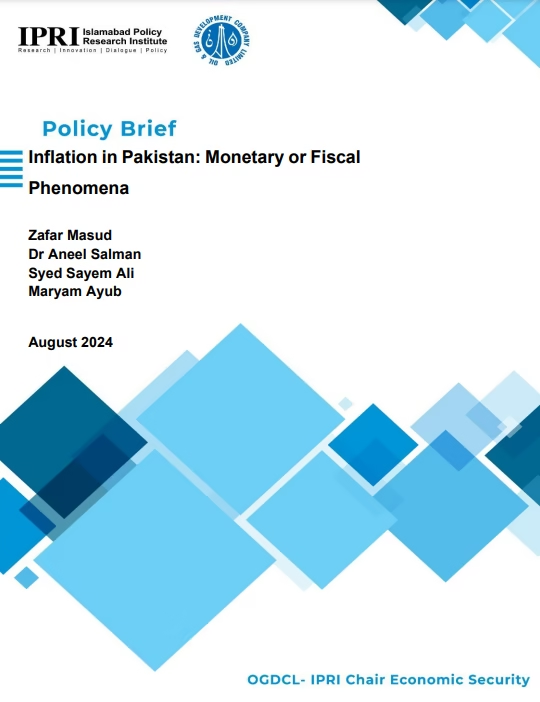Previous: Proposed Framework for Controlling Inflation — IPRI Policy Brief Pt 7
Conclusion and Policy Recommendations
Controlling inflation has been a top priority for policymakers, but with post-COVID supply shortages, global price hikes, and expansionary monetary and fiscal conditions, this issue has resurfaced across all economies.
Pakistan also faced post-COVID supply-chain disruptions, rising commodity prices, and increased domestic demand; in response, the government tightened monetary and fiscal policy. But, even with a policy rate as high as 22% for 2 years in a row, policymakers were unable to control inflation.
On the fiscal side, the government increased taxes and reduced expenditures. But with debt servicing mounting to 74% of total FBR revenues and the government operating on an average fiscal deficit of 7.33% solely relying on monetary policy to control inflation is insufficient.
Pakistan needs a relative mix of fiscal and monetary policy with roles reversed as fiscal policy on the forefront of controlling inflation with supportive monetary policy.
Also, the SBP should move the policy rate in the direction of consumer’s and businesses’ expectations of future policy rates.
To achieve this the government may,
- Design a fiscal policy that takes charge of controlling inflation with support of monetary policy in such a way that the living conditions of the general public are not worse off.
- Introduce tax reforms by incorporating well-performing sectors into the tax net and focusing on welfare taxation.
- Restructuring of State-owned enterprises and reforms in the energy sector to reduce circular debt. Investment in human capital, infrastructure development, increased expenditure in education and health sector.
- Work on improving the investment climate of the country by facilitating the investors and simplifying the process of industry setup to attract investors.
- PBS may update the consumer basket every 5 years like the practice adopted by most of the countries. Relevant consumer items can be added and irrelevant can be excluded.
- Also, PBS may update the number of selected urban and rural sectors for data collection for a more representative CPI.
- By regularly updating the CPI basket, the government may better understand consumer behaviour. This will help the government to make better policies to address the challenges faced by consumers.
- PBS may construct a PCE price index for Pakistan as a measure of inflation that serves as a better measure of inflation.
- SBP may set the policy rate in line with the market expectations of consumers and businesses. Inflation targeting may be done in the best way possible by incorporating the future expectations of policy rates and inflation.
- To incorporate the consumers and business expectations the SBP may use the New Keynesian Philips curve instead of relying on the Taylor-type rules.
- For effectively targeting inflation and incorporating inflation expectations, the SBP needs to have a due autonomous status for transparency in the policy-setting process. To improve the communication and transparency of monetary policy, SBP may publish the minutes of MPC timely with a detailed discussion of the voting preferences of individual members.
- SBP may reassess the constitution of the Monetary Policy Committee (MPC) as the policy decision rests completely at the discretion of the governor.
Inflation in Pakistan: Monetary or Fiscal Phenomena
IPRI — Islamabad Policy Research Institute
Policy Brief by
- Zafar Masud
- Dr. Aneel Salman
- Syed Sayam Ali
- Maryam Ayub
August 2024
OGDCL – IPRI Chair Economic Security

